 |
|
Royal International Air Tattoo 2022 |
 |
|
|
‘A welcome return for the
World’s biggest Military Air Show’ |
|
|
The Royal International Air Tattoo is the
world’s largest military air show, held at RAF Fairford in
Gloucestershire. It is usually an annual event, but postponements
due to the covid pandemic meant that this was the first such show
in 3 years. Both the crowds and the Worlds’ aircrews were clearly
eager to show their support and as such made it the most
successful air tattoo ever. |
|
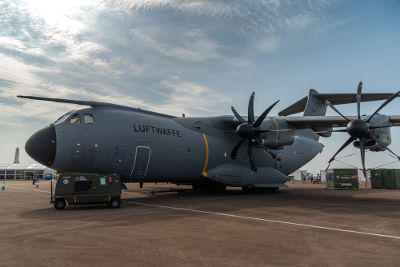 |
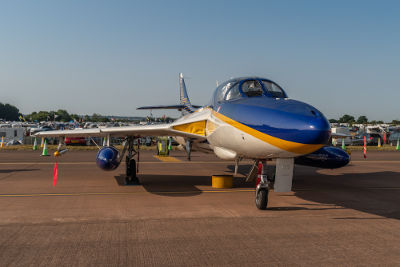 |
|
This year’s show was centred around the joint themes of Training the Next Generation and the United States’ Air Force’s 75th anniversary, and with a specific focus on sustainability, the show featured a spectacular line-up of aircraft. For the USAF, this included the E-4B, one of only four of its kind in the world. Known as the doomsday plane, the aircraft is kitted out to run government from the skies in the event of a nuclear strike or similar disaster. Other aircraft from the United States anniversary theme included a selection of warbirds, classic jets and the latest frontline operational aircraft such as the Boeing V22 Osprey and Lockheed Martin F35 Lightning II. |
|
 |
 |
|
Although the increasing temperatures throughout the weekend was
uncomfortable at times for spectators, the light winds and dry
conditions were perfect for flying and as such the full programme
went ahead as planned. An impressive collection of rotary aircraft
could be seen in the skies throughout the day. With a notable
performance from the RAF Boeing Chinook HC6 team (pictured below)
who deservedly won the Steedman display award for ‘best display
from a UK participant’. The German Army also offered a fantastic display in the NHIndustries NH90 TTH. There was also a search and rescue demonstration by the Czech Air Force in their PZL-sidnik W-3A Sokol helicopter, showing us how they might rescue an injured individual in a remote area. The unfortunate volunteer was hoisted up from the ground and then paraded along the flight line, dangling precariously. The rotary highlight of the day had to be the rare performance of two Mil MI-24 Hind helicopters, shown off by the Hungarian (Mi-24P) and Czech air forces. The later paired the Hind Mi-24V up with another Cold War relic; the MI17IS Hip. It was fantastic to see the two Russian designed helicopters in an aerial ballet complete with coloured smoke trailing from the Hind. |
|
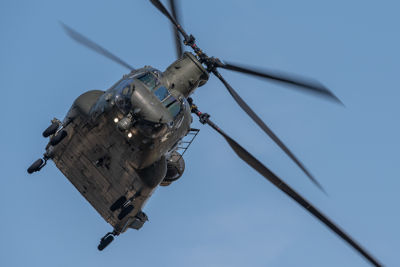 |
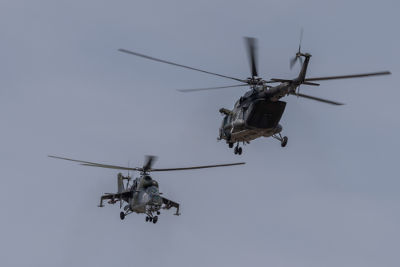 |
|
There were of course plenty of fast jets in the air too. Throughout the day we saw brilliant solo performances from the Spanish McDonnell Douglas EF-18M Hornet, the Saab JAS 39C Gripen, RAF Eurofighter Typhoon and Belgian General Dynamics F-16AM Fighting Falcon (all pictured below). The Spanish Air Force superbly demonstrated the F-18s impressive performance with vertical climbs and astonishing angles of attack. The Belgian F16 won the award for ‘most spectacular colour scheme’ even though the green ‘dream viper’ jet was unable to display. Happily, the spare F-16 had an equally as impressive ‘tiger’ scheme. |
|
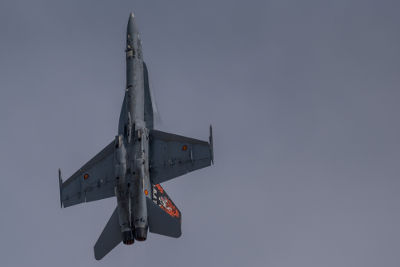 |
 |
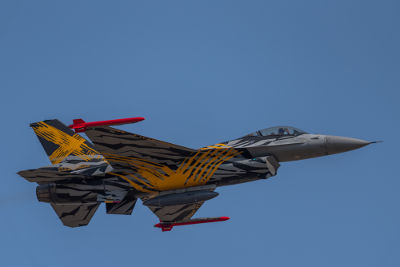 |
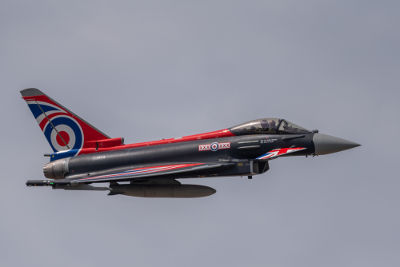 |
|
The Italian Air Force provided an impressive 3 items for the flying display; The Leonardo C-27J Spartan took home the Sir Douglas Bader Trophy for ‘best solo display’ the aircraft was one of the largest in the flying display, but it did not lack in agility - it was thrown around the skies like a fighter. The Italian’s newest jet trainer, the Leonardo T-346A Master also got an outing, but the 10 Aermacchi AT-339As of the Freece Tricolori display team proved popular with the crowds. The largest and most colourful display team of the day gave an electric performance with daring team crosses and a dynamic solo performance in between formations. |
|
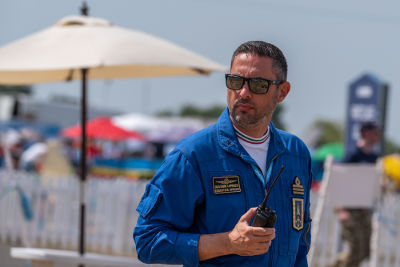 |
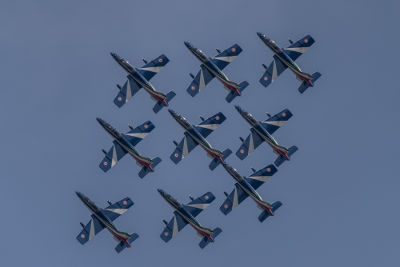 |
|
The most eagerly anticipated act of the day was the South Korean Black Eagles who were returning to the UK for the first time in over 10 years. On Sunday we were able to witness them taking to the skies twice. The first take-off at the very beginning of the flying display was to join up for a unique flypast the Red Arrows, before the RAF team went into their own 7-ship display. Later on, we were able to witness the South Koreans their full dynamic performance. Flying 8 KAI T-50B Golden Eagles in superb liveries the team stole the show and took home two awards for ‘Best Demonstration’ and the ‘FRIAT Crow Flies’ award. |
|
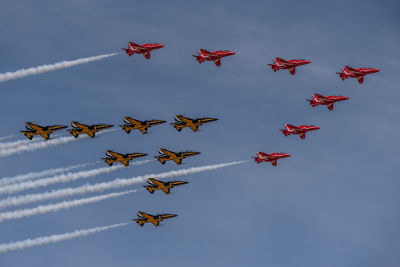 |
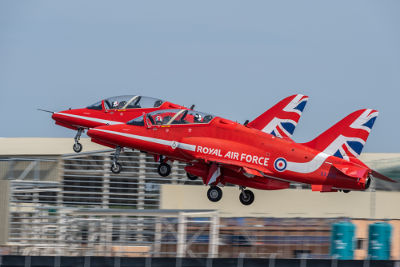 |
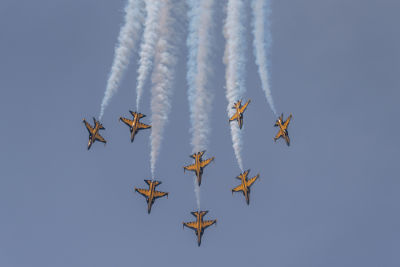 |
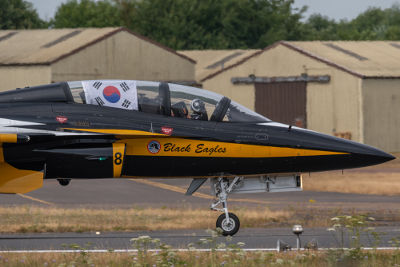 |
One of the most unique and exciting displays of the day was the Austrian Air Forces NATO QRA demonstration. Their Lockheed C130K Hercules took to the skies to play the ‘bogey’ aircraft in today’s simulation. When air traffic control was unable to contact the bogey, the two Austrian Typhoons were scrambled in an ear-splitting high-performance take-off. In no time at all the two typhoons were upon the Hercules, with one flying alongside the wayward aircraft, whist the other hung back within weapons range. After circling the airfield a few times, the Hercules was ‘forced’ to land by the Typhoons. Sadly, on the Sunday the two Typhoons were unable to demonstrate their dog-fighting skills due to a technical issue. None-the-less, this was one of the stand-out displays of the day, wining the best flying demonstration by an overseas participant. |
|
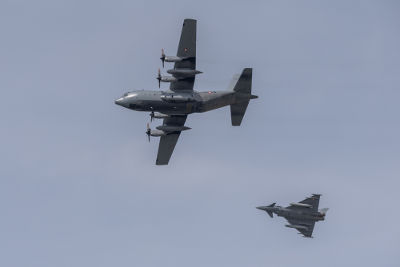 |
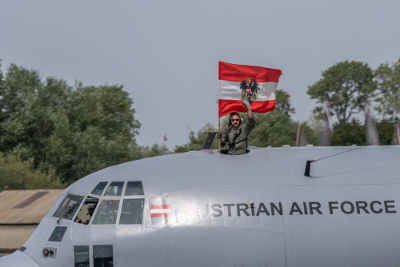 |
|
No British air show would be complete without the Battle of Britain Memorial Flight, who today made up the sole historic element of the flying display. The sight of the traditional 3-ship flight of the Avro Lancaster flanked by a Spitfire and Hurricane on each wing was a welcome change of pace. The sound of six Rolls Royce Merlin engines singing in symphony conjures up all kinds of emotions and was in sharp contrast to the modern jet engine sounds which had grown so familiar throughout the day. All three historic aircraft performed their own routines and a series of combined flypasts before departing the airfield. |
|
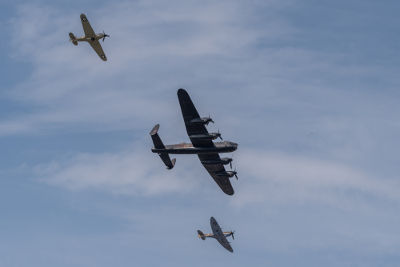 |
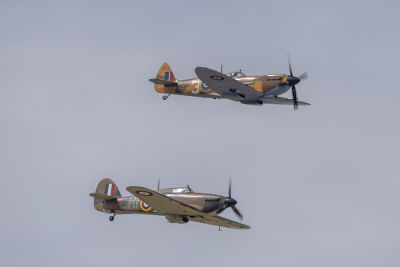 |
| The Royal Jordanian Falcons never fail to impress, even in the comparatively light Extra 330 aircraft the skill and precision of the pilots shone through, they may lack the power of some of the jet-based national teams, but they certainly made up for it with a well-polished routine. It’s also worth mentioning the brand-new French Air Force team Mustang X-Ray in their pair of very smart Pilatus PC-21s. The agile turbo-prop trainers were ably demonstrated in a well-executed routine of formation aerobatics and opposition passes. The Irish Air Corp offered a similar show later in the day with their four PC-9Ms, this was their first appearance at the show for several years. | |
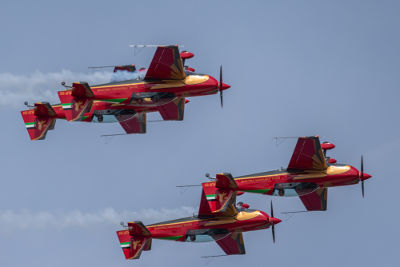 |
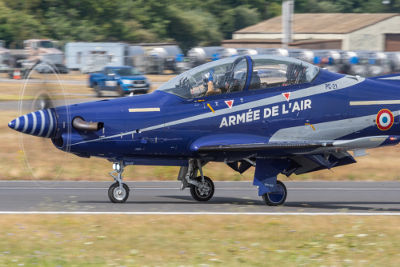 |
| Despite an impressive show on the ground, the Bell Boeing CV-22B Osprey was the sole representative in the skies for the USAF’s 75th Anniversary, the unusually configured half-helicopter/half-aeroplane was flown well by the crew from nearby RAF Lakenheath. We also saw a fine performance of the British Aerospace Hawk in the hands of the Finnish Air Force, always nice to see a British export being flown by a foreign nation. | |
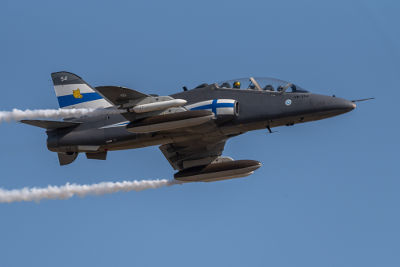 |
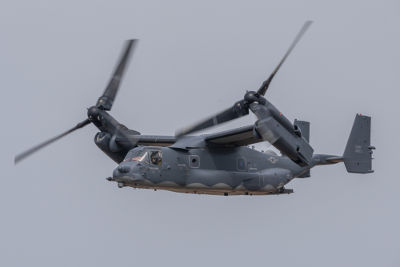 |
|
It’s hard to cover everything at RIAT in one review, even just
concentrating on the flying display, the participants from all
over the globe are so wide and varied. All the 57 participating
nations were keen to show their aircraft and pilots at their very
best. It was a very welcome return of the World’s biggest military
air show, the weather was perfect, the flying was exceptional, and
the spectators all left with big smiles on their faces. RIAT 2023
will take place on 14, 15 and 16 July and tickets are already on
sale, if it’s anything like this year, you will not want to miss
out: www.airtattoo.com/tickets |
|
| Review by Lee Chapman |
|
